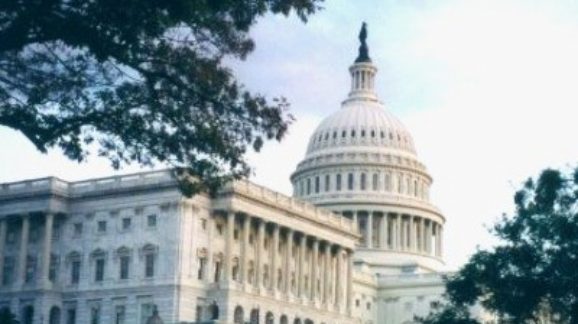House Takes Lead on Bank Reform, Senate Should Follow

 You’d be forgiven for thinking that Tuesday was all about tax reform. But that wasn’t the only thing on Washington’s agenda. Yesterday, the House also passed a significant piece of financial legislation, H.R. 3312, the “Systemic Risk Designation Improvement Act,” by a vote of 288 to 130. The bill, introduced by Missouri Republican Blaine Luetkemeyer, held strong bipartisan support with 59 Democrats—a rare occurrence in today’s partisan political environment.
You’d be forgiven for thinking that Tuesday was all about tax reform. But that wasn’t the only thing on Washington’s agenda. Yesterday, the House also passed a significant piece of financial legislation, H.R. 3312, the “Systemic Risk Designation Improvement Act,” by a vote of 288 to 130. The bill, introduced by Missouri Republican Blaine Luetkemeyer, held strong bipartisan support with 59 Democrats—a rare occurrence in today’s partisan political environment.
The broad support is a testament to the commonsense reform that the Systemic Risk Designation Improvement Act is. Under the Dodd-Frank Act of 2010, every bank holding company over $50 billion in assets is automatically designated a Systemically Important Financial Institution, an implicit admission that the government considers them “too big to fail.” This means that a midsize bank in America’s heartland is subject to the same kind of regulation as JPMorgan Chase, which has nearly $2.5 trillion in assets. This does nothing to make our financial system more stable, and only drowns regional banks in ever more paperwork.
The $50 billion threshold was never meant to last. Former Rep. Barney Frank, the Democratic co-author of the Dodd-Frank Act, has said the $50 billion asset threshold in the law was “arbitrary” and a “mistake.” The Treasury’s Office of Financial Research (OFR), a non-partisan federal government agency headed by an Obama administration appointee, recently issued a report confirming that “bank size alone does not equate to risks a firm may pose to financial stability.”
The OFR recommends, as I have written in previous blog posts here and here, that such heightened prudential regulation should be tailored to institutions through a multifactor approach that determines systemic importance. H.R. 3312 takes this approach. Instead of an arbitrary asset threshold, the bill would require regulators to consider a bank’s entire risk profile to determine whether heavy regulation is warranted, allowing certain banks to shed unnecessary regulation.
While the bill sailed through the House, it faces a tougher fate in the Senate. Senate Banking Committee Chairman Mike Crapo (R-ID) has negotiated his own bipartisan reform bill that includes a different change to SIFI designations. Instead of scrapping the asset threshold and replacing it with a risk-profile test, Crapo’s bill raises the threshold from $50 billion to $250 billion. While this is surely an improvement over the status quo, potentially exempting up to 25 regional banks from inappropriate levels of regulation, simply raising the threshold does not address one of the core problems with too-big-to-fail regulation: the fact that bank risk is not correlated with bank size.
Even a higher threshold for triggering regulation does not really help the government know whether a bank poses a risk to the entire banking system. A bank is not risky simply because it is big, but because of a range of different factors, such as its activities, complexity, and connections with other banks. A simple asset threshold addresses none of this. It also distorts the growth decisions of banks, discouraging some from growing beyond the limit, while encouraging others to grow too quickly or merge with other institutions to spread out the costs of regulation.
Interestingly, Sens. Claire McCaskill (D-MO) and David Perdue (R-GA), two senators who both co-sponsored the Crapo legislation, have previously backed the same approach as the House earlier this year, introducing their own version of the Systemic Risk Designation Improvement Act. This is the right approach. Now that the House has taken the lead on passing the bill, the Senate should look to integrate this improved approach into the Crapo legislation. With broad bipartisan support in the House, there is a good sign that it could be successful in the Senate. Senator Crapo would be wise to reconsider implementing the Systemic Risk Designation Improvement Act.